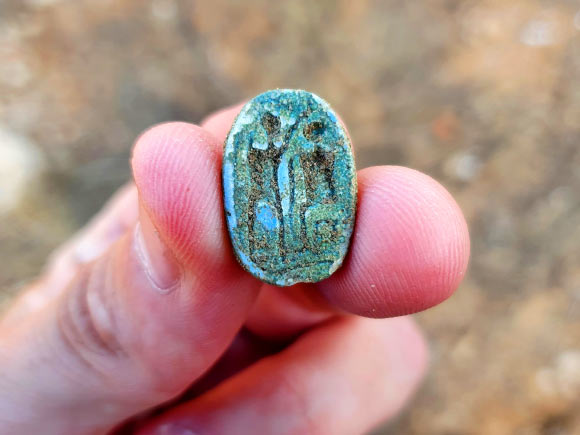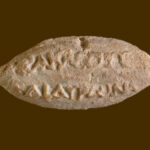The scene depicted on this ancient scarab seal ‘represents the bestowing of legitimacy on a local ruler,’ according to archaeologists from the Israel Antiquity Authority (IAA).
The 3,000-year-old scarab was discovered by Gilad Stern of the IAA Educational Center during a school field tour in Azor, about 7 km southeast of Tel Aviv, Israel.
“We were wandering around when I saw something that looked like a small toy on the ground,” Stern said.
“An inner voice said to me: ‘Pick it up and turn it over.’ I was astonished: it was a scarab with an incised scene, the dream of every amateur archaeologist. The pupils were excited.”
The scarab was designed in the shape of the common dung beetle. The ancient Egyptians saw the act of the little beetle, which rolls a ball of dung twice its size where it stows its future offspring, as the embodiment of creation and regeneration — similar to the act of the Creator God.
“The scarab was used as a seal and symbol of power and status. It may have been placed on a necklace or a ring,” said IAA researcher Dr. Amir Golani.
“It is made of faience, a silicate material coated with a bluish-green glaze.”
“It may have dropped from the hands of an important figure of authority who passed through the area, or it may have been deliberately buried in the ground, and other objects came to the surface after thousands of years.”
“It’s difficult to determine the exact original context.”
“In the lower, flat part of the scarab seal, a figure is depicted sitting on a chair, and in front of it is a standing figure whose arm is raised above that of the seated person.”
“The standing figure has an elongated head, representing the crown of an Egyptian pharaoh.”
“It is possible that we can see here a snapshot of a scene wherein the Egyptian pharaoh is conferring authority to a local Canaanite subject.”
“This scene basically reflects the geopolitical reality that prevailed in the land of Canaan during the Late Bronze Age (1500-1000 BCE), when the local Canaanite rulers lived — and sometimes rebelled — under Egyptian political and cultural hegemony,” Dr. Golani said.
“Therefore, it is possible that the seal was indeed from the Late Bronze Age when the Egyptian Empire ruled the local Canaanites.”




